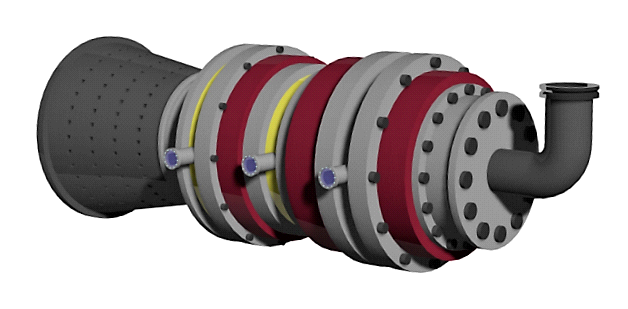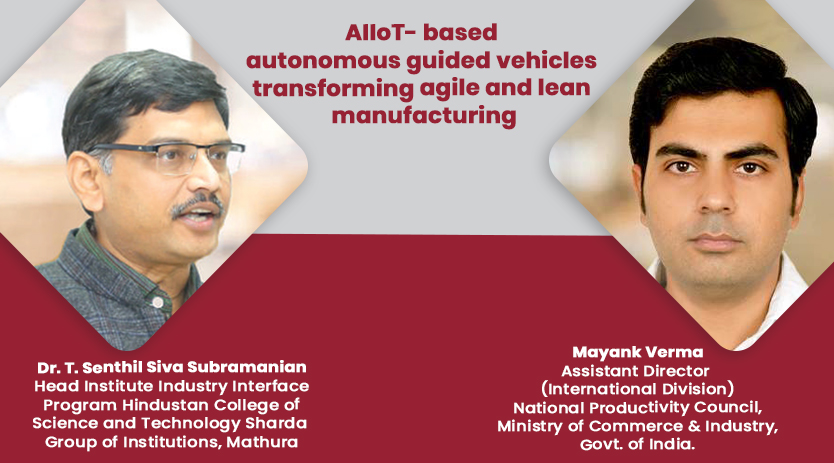VASIMR engine to help man reach Mars in 39 days
December 20, 2019 6:25 pm
During more than 40 years of space flight, a lot of things have changed. Today’s spaceship is a luxury ship compared to the capsule that carried the first man to space. One thing that has changed very little, however, is today’s spacecraft that is still travelling at about the same speed as in 1962 when John Glenn became the first man to orbit Earth. One major goal for futuristic spacecraft is that it should be able to move in deep space more quickly, enabling man to venture into deep space. One possible way to change that would be to use the Variable Specific Impulse Magnetoplasma Rocket (VASIMR) for deep space flight. It has got the potential to reach Mars with astronauts in 39 days.
There are two main types of propulsion systems, namely chemical and plasma propulsion systems that are used to lift the payload from Earth’s surface to space.
The conventional system uses chemical rockets to burn a tremendous amount of fuel to launch the spacecraft. Whereas the other system developed recently uses plasma thrust generation and is very cost-effective. Chemical rockets are suitable for only short-range trips like lifting the payload from Earth’s surface to an orbit round the Earth. But they are impractical for deep space exploration due to very high fuel requirement which would make it too heavy to be lifted into the orbit economically.
On thecontrary, plasma rocket is not used for launching payload into space, but for carrying payload that has already been lifted in the orbit for onward journey in deep space. This is called “in-space propulsion”. It will save thousands of litres of fuel and millions of dollars.
Plasma is a near ideal gas of electrons with an almost equal charge density of ions. Plasma is produced by adding energy to a gas by radiating it with lasers or microwaves or subjecting it to a very strong electric field. Normally, gases are electrical insulators, but there are always a few charge carriers present that can be accelerated by extra energy and then collide with neutral particles producing an avalanche breakdown. In the process, electrons are liberated from the gas atoms, leaving the latter with a positive charge, and the electrons move freely in the gas, thus making the plasma. Due to the presence of free electrons, the ionised gas in the plasma is a far better conductor than copper.
Expeditions to the outer solar system have been mostly “rocketless” affairs, because most of the fuel is typically expended in the first few minutes of operation, leaving the spacecraft to coast for the rest of the journey to reach its goal. Rockets using plasma as a propellant generate much lesser thrust compared to their chemical cousins, but their extremely frugal consumption of propellants allows them to operate for much longer periods and reach greater speeds or braking as necessary to achieve the desired trajectory. Vehicles using a plasma rocket system are highly efficient even when using only one-tenth of the fuel compared to chemical rockets.
Kinds of plasma propulsion
- Ion drive
A couple of dozens of ion drivers are currently operating in most of the communicating satellites in the geosynchronous orbit for controlling their position and altitude. It was first used in space applications in 1964. It can handle power about 7 kW and generate a thrust of 20–50 mN.
- Hall thruster
Its production started in the 1970s. Generally, it cannot handle power more than 10 kW and can generate a thrust of about 6 N. It is mainly used for satellite propulsion as a main propulsion engine for space probes, medium-size robotic space vehicles, etc.
- Magnetoplasmadynamicthruster (MPDT)
Although its development started in the 1960s, its progress has not been satisfactory. A power-hungry driver having an efficiency of about 40–60 percent, it can generate a thrust of 2.5 to 25 N and can handle about 100–500 kW of power. Japan launched a MPDT-propelled space vehicle in 1995 which is still the only operating one.
All these three engines are basically low-powered engines delivering a small amount of thrust and are too small to undertake interplanetary manned missions.
Scientists have dreamt of sending man to Mars and back in 39 days. To achieve this goal, a new generation of plasma propulsion system is to be developed which can sink 25–50 MW of power. A 39-day mission would require about 200 MW of input power driving 4–8 units of a yet-to-be-designed plasma engine, which will alone handle 25–50 MW of power.
In 2015, NASA awarded a $9-million contract to Ad Astra Rocket Company as a first step to achieve the goal. The best engine which has got the potential to meet the requirements is the VASIMR. To fulfil their side of the deal, Ad Astra needs to make their VASIMR engine fire at 100 kW for 100 hours continuously. They have fulfilled this milestone and hope to achieve the final goal in a couple of years.
VASIMR engine
What should a future spacecraft engine be able to do? Certainly, one major task for it is to enable the spacecraft to travel through the solar system faster than it can now. One possible way to achieve it is to propel the spacecraft by VASIMR, as believed by NASA engineers.
The use of hydrogen as a fuel has many benefits. Hydrogen is likely to be found anywhere in the solar system. This means that it is technically feasible to launch the VASIMR-powered spacecraft with enough fuel to get to a destination — for example, Mars — and then refill more hydrogen upon arrival to serve as fuel for the return trip home. Another benefit of hydrogen fuel is that it is the best known radiation shield. As the spaceship would be jacketed with hydrogen, the same could be used to protect the crew from the harmful effects of radiation exposure during the flight. Although the best option for electrical power sources for the VASIMR engine for long-range interplanetary flight is nuclear power, a fission reactor would not be feasible to meet the 200 MW power requirements due to its bulky size. Instead, scientists think that a fusion reactor is needed to limit the weight. Lockheed Martin Corporation in the US is working on a very ambitious concept of building a 100 MW container-sized fusion power plant of 20-tonne weight by 2022.
General arrangement of VASIMR engine
VASIMR is a plasma-based propulsion system. Electric power is used to ionise fuel into plasma. Electric fields heat and accelerate the plasma, while magnetic fields direct the plasma in the proper direction as it is ejected from the engine, creating thrust for the spacecraft. The engine can even vary the amount of thrust generated, allowing to increase or decrease the acceleration. It even features an “afterburner” mode for additional speed, while of course sacrificing fuel efficiency. Hydrogen, helium, deuterium or any other gas can be used as fuel.
Successful laboratory tests show that the engine that would carry the first person to Mars is already running in a laboratory on Earth.
Basic principles of operation
The propellant is injected into a hollow cylinder surfaced with electromagnets and is first heated to a cold plasma by a helicon RF antenna also known as a coupler. The primary purpose of the first RF coupler is to convert gas into plasma by ionising it, or knocking an electron loose from each gas atom. It is known as ‘helicon’ section because its coupler is shaped such that it ionises gas by launching helical waves. Helicon couplers are a common method of generating plasma. After the helicon section, the gas is now “cold plasma” even though its temperature is greater than 5800K, which is the temperature on the surface of the Sun. The newly formed plasma containing a mixture of electrons and ions carry charge and may then be contained by a magnetic field shielding the rocket core from the high-temperature plasma. The second coupler is called the ‘Ion Cyclotron Heating (ICH)’ section. ICH is a technique used in fusion experiment to heat plasma to a temperature of 10 million K that is found in the Sun’s core. The ICH waves push only the ions as they orbit around the magnetic field lines, resulting in accelerated motion and higher temperature.
The thermal motion of ions around the magnetic field lines is mostly perpendicular to the rocket’s direction of travel and must be converted into directed flow to produce thrust. VASIMR uses a magnetic nozzle to convert the ion’s orbital motion into useful linear momentum, resulting in ion speeds on the order of 1,80,000 km/hr.
The VASIMR engine uses radiofrequency (RF) waves to create and energise the plasma within its core. Hence, the VASIMR engine has no physical material electrodes in contact with the hot plasma. Hence, no plasma erosion of the electrodes happens, which means greater reliability, longer life and a much higher power density than other plasma devices. It can process a large amount of power needed for interplanetary manned missions. This technology is highly scalable, meaning that higher power versions can be easily designed.
Morphology of the VASIMR engine
There are four successive processes, i.e., ionise, energise, accelerate, and detach. The VASIMR is a radio frequency (RF) driven device wherein the ionisation of the propellant is done by ionising antenna, known as helicon, in the first phase. In the second phase, the plasma ions are further energised by Ion Cyclotron Resonance Heating (ICRH), a well-known technique used extensively in magnetic confinement fusion research, and accelerated. Finally, it is detached through the nozzle generating thrust. Power required for this device would be generated by a container-sized fusion reactor for interplanetary manned missions, then converted to RF power by RF generator and fed to both helicon and ICRH antennae for energising plasma. High-temperature superconducting magnets surround the helicon and ICRH devices. These magnets generate a B-field that guides the plasma through the helicon and ICRH boosters without touching their ceramic body. Thus, they are not subjected to plasma corrosion.
VASIMR structure
The VASIMR engine consists of three main sections:
- Injection stage (helicon discharge)
Helicon is a low-frequency RF electromagnetic wave which excites the plasma through radio frequency heating. The presence of the magnetic field creates higher ionisation efficiency and greater electron density. The engine uses radio antenna instead of physical electrodes which heats the plasma like a microwave oven heats food. The helicon waves are electromagnetic oscillations of 10–50 MHz, which in a magnetic field energises the free electrons in a gas. The electrons quickly multiply by liberating other electrons from nearby atoms in a cascade of ionisation.
- ICRH stage
In the next stage, energy is fed to the system in the form of a circularly polarised RF signal tuned to the ion cyclotron frequency. ICRH heating has been chosen because it transfers energy directly and primarily to the ions, which maximises the efficiency of the engine. An important consideration involves the rapid absorption of ion cyclotron waves by the high-speed plasma flow. The thrust/specific impulse ratio control in the engine is achieved by the selective partitioning of the RF power to the helicon and ICRH systems, with proper adjustment of the propellant flow.
- The nozzle
The vacuum chamber in the nozzle captures the hot gas as it escapes magnetic confinement. Axial momentum is obtained by the adiabatic expansion of the plasma in the nozzle. The ions are immediately ejected through the nozzle before the ion distribution has had time to thermalise. A divergent magnetic field is needed to convert the plasma’s thermal energy into directed kinetic energy, while also confining the energetic plasma away from the surface of the thruster.
Human mission to Mars
There is no major technical problem in sending man to Mars. NASA is aiming at 2030 as the date of crewed surface landing on Mars using VASIMR propulsion. This technology sustains propulsions over the entire journey and accelerates gradually, reaching 50 km/sec over 30 days, i.e., four times as fast as any chemical rocket could travel, thereby saving at least six months off a trip to Mars and minimising breakdown of any equipment, radiation exposure to crews, bone loss, muscle atrophy, etc. The option of spacecraft propulsion is available anytime, so it is possible to change the course whenever required. The projected Initial Mass in Low Earth Orbit (IMLEO) of the spacecraft has been estimated to be about 190 mt, which includes the weight of the Earth return vehicle (~30 mt), propellant (~30 mt), landing craft (~60 mt), and fusion reactor (~40 mt). At the 200 MW power level provided by a fusion nuclear reactor, with a specific mass of 1 kg/kW, a human mission to Mars can be accomplished with VASIMR propulsion in 39 days. A number of 40 MW VASIMR engines would be provided to get the required thrust. Each engine would be consuming about 40 kW/N. Another option is to use a lower capacity power plant. A 12 MW nuclear power source with a moderately aggressive technology advancement that assumes a specific mass of 4 kg/kW yields a 3-month human mission to Mars with approximately the same initial mass as a chemical mission. With this new technology, it is now possible for humans to travel to Mars and beyond safely.
For more information, contact:
Rathindra Nath Biswas
Email:rathinb7175@yahoo.com
Cookie Consent
We use cookies to personalize your experience. By continuing to visit this website you agree to our Terms & Conditions, Privacy Policy and Cookie Policy.

















 English
English Hindi
Hindi